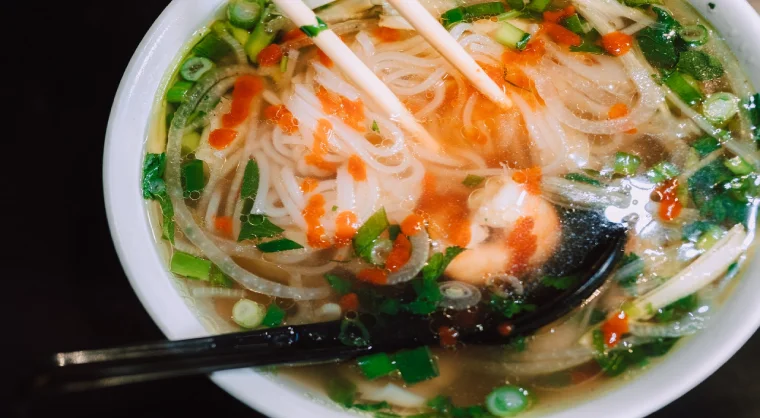- Record family recipes for preserving cultural history, relationships, and flavors passed down through generations.
- Organize recipes by meal type or ingredient for ease of use when planning family dinners or special meals.
- Scan handwritten notes and index cards into a digital archive for easy and secure access to family recipes.
- Document any special preparations or techniques for future reference, and label recipes with attribution.
Cooking up a delicious meal for the family is one of the best ways to show your love and appreciation. But when those recipes are passed down through generations, keeping track of them all can be challenging. Luckily, with some simple organization and planning, you can easily store and share your favorite family recipes so that they will last for years to come.
From digital recipe books to handwritten notes on index cards, there are many ways to ensure that your loved ones have access to these unique dishes whenever needed. This guide teaches you how to keep track of family recipes while efficiently preserving their history.
Compile the Recipes
Here are some tips on how you can compile your family recipes:
Write the Recipes in an Online Digital Journal
Writing family recipes in an online digital journal is a great way to ensure that one’s favorite dishes and snacks remain accessible for generations. Doing so correctly can also help to safeguard against any versioning errors in the recipes, as they can be updated and re-edited with complete accuracy and precision.
Keeping track of family recipes this way is especially important given their often sentimental value; recording them digitally helps preserve the culture, history, personal stories, relationships, and flavors passed down through time.
Organize Your Recipes by Meal Type or Ingredient
Organizing your recipes by meal type or ingredient is essential to any culinary routine, particularly if you have a large family that enjoys cooking and gathering together. When recipes are sorted, accessing the information needed when planning a family dinner or organizing a special meal is much easier, saving time and hassle in the long run.
By assigning a tag to each dish, such as appetizer, side dish, the main course, for the type of recipe organization, or a particular key ingredient for ingredient sorting, you can quickly locate the recipes to build up menus without having to search through piles of paper. It also allows for consistent tracking of which recipes were successful from meal to meal so that similar dishes can be repeated in the future with confidence.
Scan in Handwritten Notes and Index Cards
Organizing and keeping track of family recipes is essential for any family, especially when there are many different recipes to keep track of. To properly store your handwritten notes and index cards, scan them in with a good-quality digital scanner or camera and ensure the files are labeled clearly.
Doing this will create an organized digital archive of all your cherished family recipes that can be easily accessed from computers or other devices. This makes it much easier to quickly access meal planning information or pass recipes down to younger generations. Furthermore, scanning these documents is a great way to protect them from getting lost or damaged since they will be kept digitally safe in one place.
Document Any Special Preparations or Techniques

Documenting special preparations or techniques for family recipes is critical to ensure that these traditional recipes can live on for generations. Family recipes are often passed down for many years, but those details, such as measurements and seasoning levels, can be forgotten over the years.
An adequately documented record of what’s necessary to create these dishes is essential in preserving and keeping them alive, especially if someone can’t pass it along directly. Taking good notes while cooking which include all of the required measurements and any special instructions or story related to the dish, are essential steps so that future members of the family can carry on this tradition. Plus, having formulas recorded helps in branching out by applying a similar technique to other dishes!
Label Recipes with Attribution and Date
Proper labeling of family recipes is essential to keep track of the recipes passed down through generations. It is important to make sure that each recipe contains clear attribution and a recorded date. Attribution includes the author or source from where the recipe was found or collected, such as a family member or an online resource.
It is key to include this information so that credit can be given where it’s due and for easy tracking of changes made between versions. Additionally, including a date with each recipe is beneficial for keeping track of which version is currently in use by family members.
While not all will use the same version, having a signature date on recipes helps ensure everyone can access accurate information about what ingredients and instructions should be followed for any given recipe.
Share the Recipe Collection with Loved Ones

Sharing recipes with loved ones is one of the most important steps to collecting and preserving family recipes directly from the source. Taking the time to request and share recipes with family members can capture memories that are associated with certain dishes and create connections between generations by bridging the physical distance between them.
By asking for recipes, you also help keep track of ingredients, cooking methods, and other preparation techniques that can get lost over time. In addition to capturing memorable moments, a collection of family recipes can also be used to pass down knowledge of a particular cuisine or cultural customs that would otherwise be difficult to maintain over the years.
These are just a few tips for organizing and preserving your family recipes. With these simple steps, you can ensure that your favorite dishes are enjoyed now and remain accessible to your children and grandchildren for many years to come.





